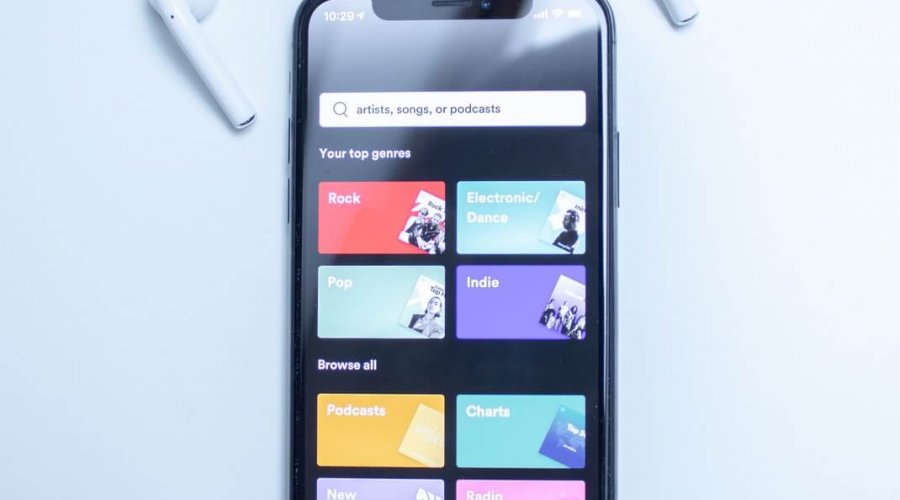In part one of our feature on playlisting, we explained what playlisting is and why it is important. In part two, we will give advice on how to increase your chances of being featured in a popular playlist.
How to increase the chances of getting your music on a playlist
Here are a few tips on how to make your music stand out and increase your chances of being featured in a curated playlist:
- Write and record great music. Create unique and outstanding music that is professionally mixed and mastered and features excellent performances. You will instantly stand out from the rest.
- Have a strong and consistent social media brand and presence.
- Execute thorough research and make sure that you are pitching to curators that are likely to listen. If you’re a folk singer/songwriter, don’t send a generic email to a heavy metal curator.
- Furthermore, do the same research into bloggers and publications that review music to try and create a buzz around your music. Get your name out there.
- Reach out directly to tastemakers via social media or email. Check out our recent blog for tips on how to craft the perfect submission. Follow them on social media and try to build a relationship. Do this gradually over time and don’t bombard them with messages. After building a relationship, ask if they would be willing to listen to your music and send them a link. Also, if you have a lot of followers, then offer to share their playlist with your fanbase in return for a track feature.
Optimise your streaming profile
- Make use of all the additional features available on streaming platforms. Use the links to merchandise, website, social media and upcoming tour dates and keep them updated.
- Get your page verified.
- Provide an interesting and succinct biography.
Get spotted by algorithmic playlists
Platforms such as Spotify and Apple Music have their own algorithmically curated playlists that people use to discover new music, based on what they already listen to. Examples include: Discover weekly, release radar and your daily mix.
To get noticed by the platforms algorithm, you need to get genuine fans to share your music, follow you and listen to your music. As a result of this increased activity, the algorithm will prioritise your track and hopefully feature it on playlists such as discover weekly.
The “Fresh Finds” algorithm searches the internet, social media, blogs and non-spotify owned playlists for music. So, as previously mentioned, do all that you can to increase the online buzz around your music.
Never use services that allow you to pay for additional streams as they don’t work and you risk having your account deleted.
Curate your own playlist!
Have some fun creating your own artist playlist! This will give fans a taste of what you are listening to. Go to your local record store or live venue and make a list of local acts. Then, consider reaching out to them, informing them that you have featured their music and ask them to share and follow your page. Start off small and local, then gradually branch out.
Tips on curating your own playlist:
- Between 1 and 2 hours of music is a good length.
- Create some eye-catching artwork to grab people’s attention and show that you have put effort into the playlist.
- Unsplash and Canva are useful resources for creating your own artwork. As always with visual content, create a moodboard of ideas and pull together the best elements.
- Write a succinct playlist description that explains the theme and what kind of music is featured. Use keywords to get prioritised in searches.
- Consider keeping a long playlist, archiving all the songs that you have previously used. That way artists can see that you have shown them support in the past.
- Update the playlist regularly to retain interest, don’t change all the tracks at once, Constantly filter new tracks in whilst simultaneously removing a few so the playlist slowly evolves over time.
Putting into practise
Start pitching your track somewhere between two months and 6 weeks before the release date. Politely follow up with the curator a week after your first contact. When contacting a curator, be as concise and memorable as possible. Check for any submission guidelines or requests before you send your music. For example, if they have a submissions form, use it and don’t send them a personal email. They probably receive hundreds, if not thousands of submissions so make a good impression from the start.
Don’t forget to thank people for their support and be a likeable person. Show your appreciation for their time and always thank them. If you receive feedback, pay attention to what they have said and consider making these adjustments in the future. Don’t be afraid to ask why they didn’t like something.
Finally, don’t be disheartened by negative feedback or no responses. It is just one person’s opinion and they receive a lot of submissions every day. Finish your release and keep moving forward.

